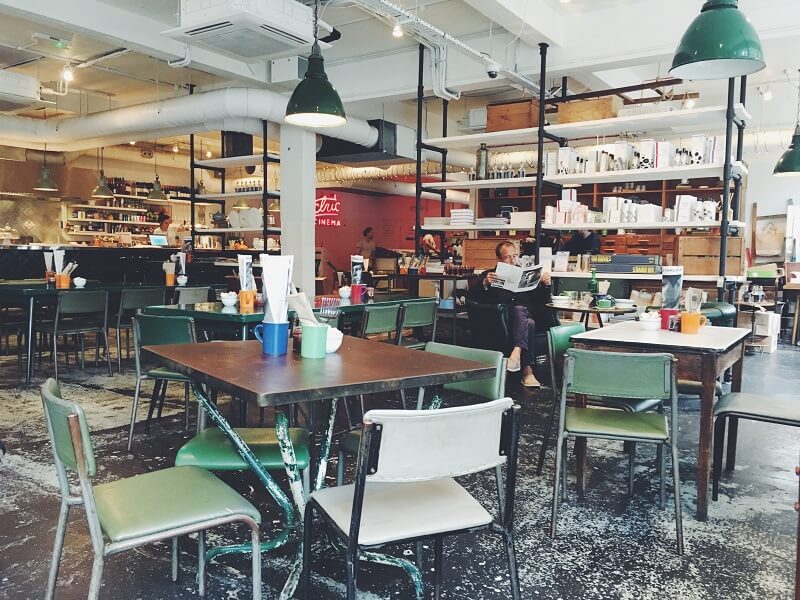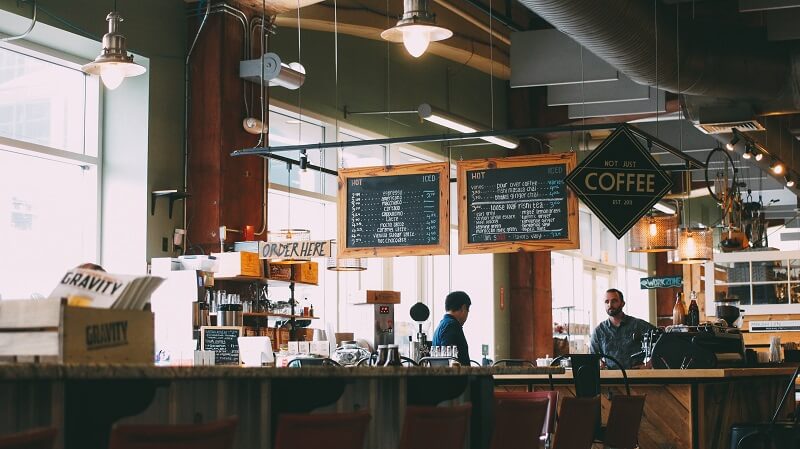A simple coffee shop business plan with a single document divided into sections can help you launch your business. Organization description, market research, competitive analysis, sales strategies, capital, labor, and financial data should be included.
Depending on size and scope, coffee business plans examples range from a few pages to hundreds of pages. If you want to bank or investor financing for a small business like a coffee shop, keep the plan to 30 pages or less. Investors want concise research and analysis.
Visualize your plan. To enhance your plan, including photos, designs, or site plans of potential locations. Revenue projections are shown in charts and graphs.
What is a cafe business plan?
A cafe or coffee shop plan describes your business idea and its viability. It addresses how much it costs to open a cafe, how you’ll pay for it, and how much you’ll make. A coffee shop business plan covers competitors, target markets, and pricing.
Your business plan can be presented to investors, bankers, partners, and others who can help you open your cafe. It’s a crucial document, so take your time to get it right. We’ll help you put together your business plan after you learn about its components.
Vision First
Creating a business plan is the first step to opening a cafe or coffee shop, so dream big. Your cafe design? Decorate it? Its location? Sell what? Its visitors? How will your customers get from the door to the checkout?
Cafes, images, movies, books, and travel can inspire you. Create a mood board by writing or hanging pictures. As you spend hours on your business plan, looking at your initial vision and remembering the end goal will motivate you.
Study other business plans.
Before writing your masterpiece, look at the cafe, coffee shop, and quick-serve restaurant business plans. Make sure your cafe is following its business plan.
Small business owner examples are also useful. Ask a local coffee shop or franchise owner how they succeeded and what they would change. You can also ask an accountant to help you write your business plan. Even if local business owners are your future competitors, they may share their experiences.

Building your business plan template
Online business plan templates can help you get started. Below are the basic business plan sections and tips on how to build them.
1. The executive summary
Executive summaries appear first in business plans. This summarizes your business plan’s sections. Read examples of executive summaries to see how they are written and how they present the information.
Consider your business plan’s readers as you did your cafe’s customers. Your executive summary is your most important marketing tool when opening your cafe.
2. Will your cafe succeed?
The second section answers questions like, “What problem does your cafe solve?” and “How will your cafe solve it?” A busy retail center near you may need a coffee shop or cafe. The downtown restaurant may have closed.
This summary describes your industry, where your cafe will be, and what makes it unique. Will your airport-area shop serve breakfast sandwiches? Your famous pie? You’ve planned your cafe’s success. Ensure your business plan readers understand that.
3. Research your rivals
A competitive analysis follows your business plan. It details how your cafe will compete with Starbucks and McDonald’s. You compete with nearby restaurants, coffee shops, and even movie theaters. Now is the time to visit potential competitors and note their customers, products, and prices.
To stay competitive in your market, you must know how much other businesses charge for coffee, pastries, sandwiches, and other goods. Due to high overhead, small cafes have low operating incomes (profits) despite high gross margins.
However, a thorough analysis of your competition can help your cafe succeed. Writing about how your cafe will compete with other businesses will convince your reader (and, more importantly, yourself) that opening a restaurant or cozy cafe is feasible.
4. Assess your market
Your cafe needs regular customers to succeed. Unfortunately, “if you build it, they will come” does not apply to foot traffic. In your business plan, your market, market size, and marketing plan are your future customers.
Your cafe or restaurant business plan will then segment your market. Parents or caretakers may stop by for high-end coffee after dropping their kids off if your coffee shop is near an elementary school. Coffee-drinking college students studying for exams.
You can target specific customers by segmenting your market. Your market analysis will include your marketing plan.
barista pouring milk for latte art in coffee
5. What and how will you sell?
Now that you know the competition charges, create a cafe pricing strategy.
Smartly set your menu and prices. Since you’ll buy ingredients in bulk, use them in multiple dishes. Is your cafe considering selling wine? Like coffee, liquor has some of the highest profit margins in the industry. Still, a liquor license costs money and may require a waiting period, so you should start with non-alcoholic drinks.
Be inventive. Customers will buy more and waste less if you charge less for a croissant and coffee combo than for those items alone. Your menu will likely change after opening. For a business plan, you’ll need to know how much you’ll charge for coffee or soup by breaking down the ingredients and researching your competition.
6: Make a marketing plan
Your sales and marketing plans can be separate or integrated. Will you post specials every morning on social media? Will you collaborate with a local business for promotions? This is a good place to discuss customer retention and marketing. Do you offer loyalty programs or birthday cookies to your best customers? A point-of-sale cafe system makes rewarding and retaining customers easy.
7. Ownership structure
Your business plan will outline ownership. Explain your and your partners’ experience and why you’re qualified to start a business.
8. Your operations plan
This section covers your facilities, employees, equipment, and supplies. Consider rent, barista salaries, coffee beans, and technology. Use a POS system to check out customers, clock in part-time workers, and manage your cafe’s inventory.
Estimate your flour and egg reordering needs. Considering operating costs during business planning pays off. A coffee roaster is an upfront cost, but roasting your coffee at your cafe can reduce operating costs. Save money on secondhand chairs but not on your espresso machine.
9. Financial planning
Now create a cafe financial plan. For lenders and investors, this is the most time-consuming and crucial part of your business plan. It should include a break-even analysis, income statement, projected cash flow, balance sheet, and startup costs.
Startup costs
Because most businesses require startup funding, “it takes money to make money” is true. You may be writing a business plan to get a loan for your cafe, but remember that startup funds can come from anywhere. What’s your loan amount? Use your savings. Fan crowdfunding? A business plan details how your cafe will be funded and how that money will cover startup costs.
Income statement
After knowing your startup costs, operating costs, pricing strategy, and target market, you can create an easy-to-read income statement. To prove that your cafe business will profit, add up your expenses (mainly operating costs) and your projected monthly sales volume (based on your pricing strategy and market research). For your cafe’s first year, monthly project income. View income statements to see your final analysis.
Looking ahead to the future
Writing a cafe business plan involves projecting cash flow. Your cafe’s cash flow may need to be projected for five years in months or quarters, depending on your business plan’s audience. Though challenging, this exercise is doable. Most financial work is done.
Use your customer and employee experience to estimate your cafe’s future revenue. If your cafe serves college students, summers are slow, but if you’re in a busy shopping district, holidays are busy. These cash flow projections will be easy-to-read statements in your business plan, like your income statement.
Balance sheet
Your cafe’s opening balance sheet lists assets, liabilities, and equity. It determines a company’s budget. It’s less important than the income statement for a small cafe, but it gives a realistic picture of its finances.
Breaking even
Since you know how much money you have and how you will make a profit, you can estimate how long it will take your cafe to make a profit break-even point.
Keeping the restaurant dream alive
Before opening a cafe, you must create a business plan, which can be difficult. A well-planned business plan proves your cafe can succeed.




